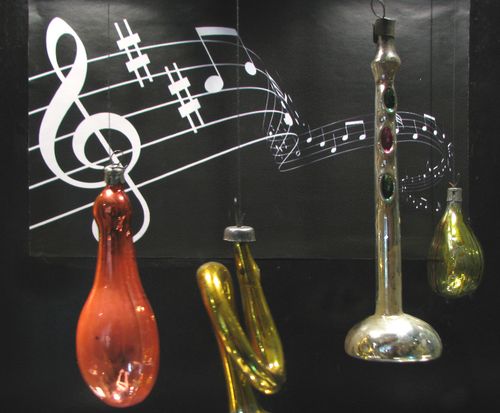New Year fairytale from our childhood
An exhibition of vintage New Year decorations has opened at the State Toy Museum
Christmas tree decorations and toys will help the visitor take a long view of the traditional holiday, since exhibits on display belong to the 19th and 20th centuries. It is no accident that adults and children alike are rushing to visit the museum as if the holiday has already come there, because no modern department store or supermarket can offer such variety of decorations, while a real fairytale always starts with fantasy.
“People get them out of boxes only once a year, they cost much more than today’s refined counterparts,” the museum’s director Liudmyla Hladun told us. “Vintage New Year decorations reflect their age in specific ways and keep alive traditions of the warmest family holiday... Our visitors are welcome to see a large number of Soviet-era Ded Morozes and Snegurochkas, cardboard Dresden decorations of the 19th century, framed glass decorations from Bohemia, Christmas tree decorations of the World War II era, figurines of cosmonauts and rockets from the 1960s, and the first polyester decorations. Contemporary Ukrainian artists keep alive the ancient absorbent cotton sculpture technology. Absorbent cotton Christmas tree decorations, first produced in the 19th century, are the centerpiece of this year’s exhibition.
New Year is one of the oldest holidays that started with the first ancient civilizations. During this time, many holiday traditions and peculiar ways to celebrate it have appeared, existing in every culture now. We have found in our collection and are now offering for our visitors to see European Christmas trees of the late 19th century, a Soviet-era New Year tree, and traditional Christmas decorations of the 19th century, including pressboard Dresden decorations, lithographic angels, copper wire garlands and stars, known as ‘flattened decorations.’ We have also put on show cotton wool figurines, fruits and vegetables of the early 20th century as well as framed bicycles, windmills and airships made of carefully assembled Bohemian glass beads and tubes.
Boys will be interested in our militaria, that is, toys typical for the World War II era that have been put on a khaki-colored paper Christmas tree. They include flags depicting military vehicles and victorious soldiers as well as Christmas tree decorations made of light bulbs. This year, we have put on display a unique exhibit, a glass Christmas tree decoration shaped as the first German tank and carrying a silver cross.
Ded Morozes and Snegurochkas, made in Ukraine between the 1940s and 1970s from cotton wool, cardboard, papier-mache and even styrofoam make up the exhibition’s central composition. A shiny Christmas tree, made of the first polyester Christmas tree decorations produced in the 1970s, has gotten a place of its own, similarly to unique carnival hats (masks) made by artist Zyma.
Works of contemporary Ukrainian artists are the jewels of this year’s exhibition. They include cotton wool and wool toys made by Estonian-Ukrainian artist Ellen Orro, cotton wool compositions and paper Christmas trees created by Mila Fonrai, original cotton wool Christmas tree decorations made by owner of the Home-Made Toys studio Yulia Dmukh, and cotton wool sculpture project “Winter Entertainment,” a joint effort of Olena Zolotova and Olena Misiuna.
Collection “Winter Entertainment” consists of three parts. The first of them includes child dolls in winter garb that play outdoors with their pets, feed birds, ski and skate. They love active winter games in the snow. The second part of the collection includes cotton wool Christmas tree decorations, shaped as brightly painted fishes and birds. The third part consists of Christmas tree decorations, too, but these are stylized merry girls, made by putting cotton wool clothes on wire frame. The girls’ postures can be changed without taking them down from the Christmas tree, as their hands, legs and necks are flexible. Children will find playing with these Christmas tree decorations an interesting and happy experience, for they are unbreakable.
The two masters combined their knowledge and skills in this project to create unique pieces for others to enjoy.
The exhibition will run until February 2014.






